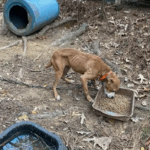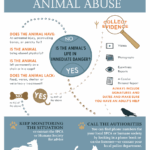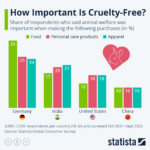Animal cruelty stands as a pervasive and disheartening phenomenon that transcends borders and cultures. To comprehend the gravity of this issue, one must grapple with the statistics and realities that underpin it. This exploration delves into where animal cruelty is most rampant across the globe, illuminating not only the regions that bear witness to highest incidences but also the socio-economic dynamics that foster such behaviors.
Across various continents, the prevalence of animal cruelty can manifest in disparate forms, shaped by cultural norms, legal frameworks, and economic conditions. In many developing nations, the lack of strict animal protection laws coupled with a deep-rooted reliance on animals for survival leads to high occurrences of neglect and abuse. In contrast, affluent societies might experience cruelty less overtly, often hiding behind the façade of refinement while engaging in exploitative practices under the guise of entertainment or profit.
One of the key regions where animal cruelty flourishes is Southeast Asia. Countries like Indonesia, Thailand, and Vietnam witness rampant abuses, often associated with traditional practices that celebrate animal consumption. In certain locales, dog meat festivals, notorious for their brutality, highlight the disconnect between cultural customs and compassionate treatment of animals.
For example, the Yulin Dog Meat Festival in China draws international condemnation due to its abhorrent practices. Reports often reveal staggering estimates of dogs being cruelly treated and slaughtered. The festival’s defenders argue it is a tradition; however, the ethical implications challenge the moral compass of a civilized society. This showcases not only the ethical ambivalence surrounding animal rights but also the cultural complexities that complicate global dialogue on the matter.
As we transition to sub-Saharan Africa, the context shifts, revealing a different dimension of animal cruelty interwoven with the fabric of human survival. In nations such as Ethiopia and Kenya, where livestock form the backbone of agrarian economies, the treatment of animals can frequently border on neglect due to poverty and insufficient resources. Culling practices during droughts or disease outbreaks often lead to horrific episodes of animal suffering, revealing the harsh realities of survival where human and animal rights clash.
Interestingly, the developed world is not free from its own forms of animal cruelty. In the United States and parts of Europe, industrial farming practices—commonly referred to as factory farming—are responsible for severe abuses. The sheer scale of animal rearing, often devoid of empathy or humane considerations, raises alarming questions about our consumption patterns. Numerous studies illustrate the stark realities faced by livestock confined in stark, cramped conditions, often subjected to inhumane treatment in the name of profit and efficiency.
Moreover, the crime statistics concerning animal abuse in urban areas depict a disturbing trend. A correlation exists between animal cruelty and other forms of violence; a significant number of documented cases reveal that individuals who commit acts of violence against animals often escalate to harming humans. This alarming link emphasizes the need for stringent regulation and educational initiatives aimed at fostering compassion for all living creatures.
What about the relentless fight against animal cruelty in the realm of animal testing? This practice continues to evoke outrage, particularly among animal rights advocates who argue that the suffering inflicted on sentient beings for the sake of human benefit is ethically indefensible. Countries such as Japan and Canada have made strides in enacting bans or restrictions on cosmetic testing on animals, yet the biomedical industry stubbornly clings to antiquated methods. This cyclical dependence on testing highlights the broader ethical dilemmas and the pressing need for innovative, humane alternatives that respect animal welfare.
Understanding the spectrum of animal cruelty necessitates a holistic approach that encompasses pre-existing cultural paradigms. The prevalence can be exacerbated when viewed through the lens of socio-economic disparity. In wealthier nations, the suffering is often masked behind legal loopholes or corporate policies, while in impoverished regions, the crushing weight of survival dictates interactions with animals. Thus, the justification for cruelty is as varied as the environments in which it occurs.
The power of legislation cannot be overstated in the movement against animal cruelty. Effective laws can serve as a deterrent while promoting societal empathy. Nations such as Germany and Switzerland boast comprehensive animal welfare laws that impose stringent penalties for cruelty and promote humane treatment. By setting a legal precedent, these countries exemplify how governance can shift societal norms towards a more respectful coexistence among species.
Yet, the absence of similar laws in other territories cries out for international collaboration. The call for international treaties to protect animal rights is growing louder, accentuating the urgency of this cause. Global awareness campaigns and the outreach of non-governmental organizations foster a tides of change, challenging outdated perceptions and galvanizing collective understanding.
As we ponder the current realities of animal cruelty, it is imperative to remain hopeful for progress. Change is often sparked by awareness, education, and empathy. Through understanding the intricacies surrounding where animal cruelty is most prevalent, society is prompted to rethink practices and strive for a future where animals are treated with the dignity and respect they undoubtedly deserve.
In conclusion, the fight against animal cruelty transcends geographical confines and demands vigilance, compassion, and action to create lasting change. By illuminating these compelling statistics and realities, society can journey towards a world in which all animals—irrespective of species—live free from fear and suffering.






